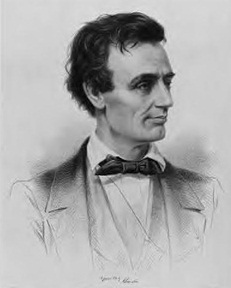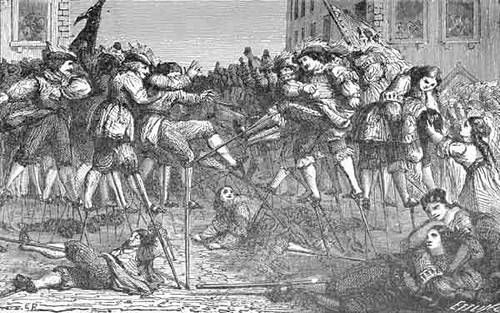The world’s heaviest mammal, the blue whale, can weigh more than 90 million times as much as the lightest, the pygmy shrew.
Perpetual Notion
Inventor John Keely insisted that his “hydro-pneumatic-pulsating-vacu-engine” could drive a 30-car train 75 miles in 75 minutes using only a quart of water.
When he died in 1898, investigators found a three-ton sphere of compressed air in his basement, which drove his prototypes via hidden air-pressure tubes.
Supporters still insist he was framed.
Lincoln’s Beard

A letter to Abraham Lincoln, Oct. 18, 1860:
Dear Sir
My father has just home from the fair and brought home your picture and Mr. Hamlin’s. I am a little girl only eleven years old, but want you should be President of the United States very much so I hope you wont think me very bold to write to such a great man as you are. Have you any little girls about as large as I am if so give them my love and tell her to write to me if you cannot answer this letter. I have got 4 brother’s and part of them will vote for you any way and if you let your whiskers grow I will try and get the rest of them to vote for you you would look a great deal better for your face is so thin. All the ladies like whiskers and they would tease their husband’s to vote for you and then you would be President. My father is a going to vote for you and if I was a man I would vote for you to but I will try to get every one to vote for you that I can I think that rail fence around your picture makes it look very pretty I have got a little baby sister she is nine weeks old and is just as cunning as can be. When you direct your letter direct to Grace Bedell Westfield Chatauque County New York
I must not write any more answer this letter right off Good bye
Grace Bedell
Lincoln actually wrote back, asking, “As to the whiskers, having never worn any, do you think people would call it a piece of silly affection if I were to begin it now?”
When the two met the following year, Lincoln was president-elect — and had grown his famous beard.
Limerick
A bdellium bdiamond of beauty
Was bdisplayed in a shop in Bdjibouti.
I bought it, then came
A bdelicate bdame
I’m her suitor now, and she my suitee.
— Anonymous
Occupied
People who died on the toilet:
- Edmund Ironside, King of England (989-1016)
- Uesugi Kenshin, Japanese warlord (1530-1578)
- Arthur Capell, First Earl of Essex (1631-1683)
- George II, King of Great Britain and Ireland (1683-1760)
- Catherine the Great, Empress of Russia (1729-1796)
- Evelyn Waugh, English writer (1903-1966)
George Carlin said, “At a formal dinner party, the person nearest death should always be seated closest to the bathroom.”
Top Oscar Winners
Films winning the most Academy Awards:
Ben-Hur: 11
Titanic: 11
The Return of the King: 11
West Side Story: 10
Gone with the Wind: 9
The Last Emperor: 9
The English Patient: 9
Gigi: 9
From Here to Eternity: 8
On the Waterfront: 8
My Fair Lady: 8
Cabaret: 8
Gandhi: 8
Amadeus: 8
“There’s a lot of great movies that have won the Academy Award, and a lot of great movies that haven’t,” Clint Eastwood said. “You just do the best you can.”
Meow
F.D.C. Willard isn’t the only overachieving housecat.
In 2004, a cat named Colby Nolan received an MBA from Trinity Southern University in a fraud investigation by the Pennsylvania attorney general.
To be fair, Colby had a pretty good resume. The cat’s application listed community college courses, work at a fast-food restaurant, babysitting, and a paper route. Once accepted he earned a 3.5 grade point average in the MBA program, according to his transcript.
In 1967, Oliver Greenhalgh, another cat, was accepted as a Fellow of the English Association of Estate Agents and Valuers during an investigation of bogus associations. Oliver paid 11 guineas; it’s not clear what would have happened if they’d called his references.
“Citius, Altius, Fortius”

Organizers founded the modern Olympic Games in 1896, and they hadn’t quite got the hang of things by 1904. That year included “Anthropology Days,” in which indigenous people from around the world were borrowed from the World’s Fair to compete against white men in various events, including mud fighting, greased-pole climbing, and rock and spear throwing.
This was so embarrassing that the Olympic committee held “intercalated” games just two years later, in Athens, to help everyone forget about it.
Unquote
“If A is success in life, then A equals x plus y plus z. Work is x; y is play; and z is keeping your mouth shut.” — Albert Einstein
“A Battle on Stilts”

“In the year 1748 the great Marshal Saxe, who was travelling through the Low Countries, came to the town of Namur in Belgium. There the citizens did everything in their power to make his stay pleasant and to do him honor, and among other things they got up a battle on stilts. These inhabitants of Namur were well used to stilts, for their town, which has a river on each side of it, lay very low, and was subject to overflows, when the people were obliged to use stilts in order to walk about the streets. In this way they became very expert in the use of these slim, wooden legs, and to make their stilts amusing as well as useful they used to have stilt-battles on all holidays and great occasions. …
“Things are different in this country. It is said that in 1859 a man walked across the rapids of the Niagara river on stilts, but I never heard of any of his taxes being remitted on that account.”
— Frank R. Stockton, Round-About Rambles in Lands of Fact and Fancy, 1910
